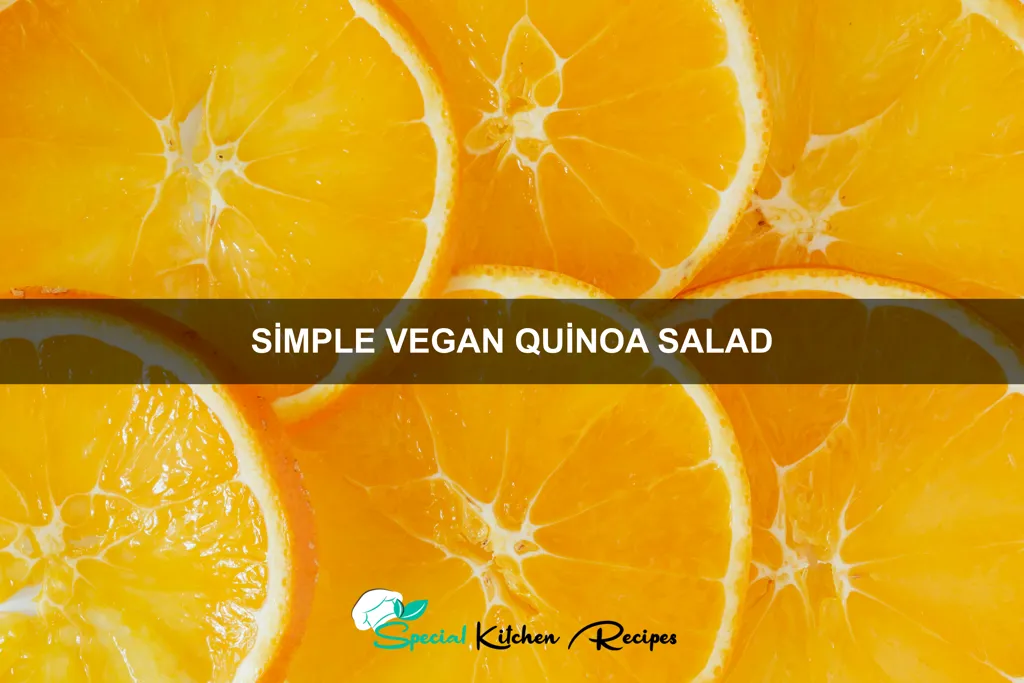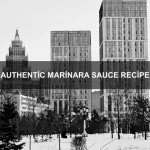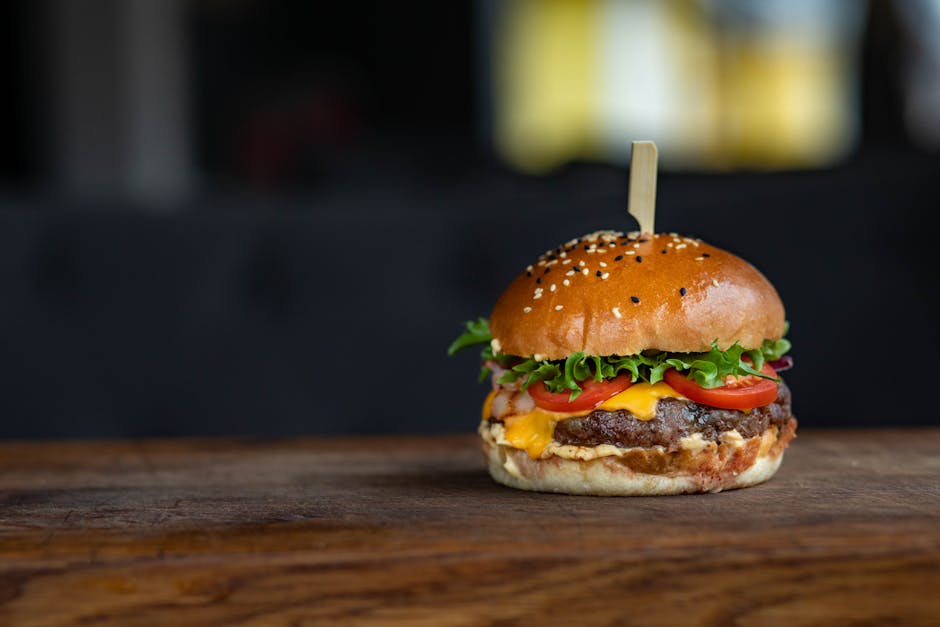Simple Vegan Quinoa Salad, while seemingly modern in its presentation, draws upon a rich history of grain-based dishes from across the globe. Quinoa, a complete protein source originating in the Andes Mountains of South America, has been a staple food for Incan civilizations for over 5,000 years. Archaeological evidence suggests its cultivation predates even maize, highlighting its enduring importance in Andean cultures. Originally cultivated at high altitudes, quinoa’s resilience and nutritional value made it a cornerstone of their diets, even contributing significantly to their impressive physical capabilities at those elevations. Today, quinoa’s popularity has exploded globally, becoming a symbol of healthy and sustainable eating, with global production exceeding 200,000 tonnes annually (FAOSTAT data).
The concept of a quinoa salad, however, represents a more recent culinary fusion. While quinoa itself has ancient roots, the modern preparation of quinoa in a salad format is a reflection of global culinary exchange. The simplicity of the dish – combining cooked quinoa with fresh vegetables, herbs, and a light dressing – highlights the adaptability of quinoa to various cuisines. It’s a testament to the increasing global interest in vegetarian and vegan diets, which have seen a substantial rise in popularity in recent decades. Studies show that the number of vegans in the United States alone has increased by over 600% in the last 15 years (source: various market research reports), reflecting a growing awareness of the environmental and health benefits associated with plant-based eating.
The cultural significance of this simple salad is multifaceted. It embodies the increasing global adoption of plant-based diets, showcasing the versatility of a grain with ancient origins. It represents a fusion of culinary traditions, bringing together the Andean heritage of quinoa with the modern preferences for fresh, healthy, and convenient meals. Furthermore, the ease of preparation and customization makes it accessible to a wide range of cultures and dietary needs, promoting inclusivity and a shared appreciation for wholesome food. The salad’s adaptability allows for regional variations, reflecting local ingredients and tastes, further reinforcing its global appeal and cultural relevance in the modern culinary landscape.
Ingredients and Measurements
This Simple Vegan Quinoa Salad recipe relies on fresh, high-quality ingredients to deliver maximum flavor and texture. Precise measurements are crucial for achieving the perfect balance, so please use a kitchen scale for the most accurate results, especially when measuring the quinoa and vegetables. A digital scale is highly recommended for consistent results.
Quinoa: 1 cup (150g) of uncooked quinoa. Choose a high-quality quinoa, either white or tri-color, for the best flavor and nutritional value. Rinse the quinoa thoroughly under cold water before cooking to remove any saponins, which can impart a bitter taste. This rinsing step is essential for a pleasant-tasting salad.
Vegetable Broth: 1 ¾ cups (420ml) of vegetable broth. You can use store-bought low-sodium broth or make your own from scratch for a deeper, more nuanced flavor. Avoid using overly salty broth, as you can always add more salt later to taste. The liquid quantity is crucial for perfectly cooked quinoa; too little will result in dry quinoa, and too much will leave it mushy.
Cucumber: ½ medium cucumber (approximately 100g), finely diced. Choose a firm cucumber for the best texture. Peeling is optional, depending on your preference. Dicing the cucumber uniformly ensures even distribution throughout the salad.
Cherry Tomatoes: 1 cup (approximately 150g) of cherry tomatoes, halved or quartered. Use ripe, flavorful cherry tomatoes for a burst of sweetness in the salad. Choose smaller tomatoes if you prefer a more manageable bite size.
Red Onion: ¼ medium red onion (approximately 50g), finely chopped. Soaking the chopped red onion in cold water for 10-15 minutes before adding it to the salad will help to mellow its sharpness. This step is highly recommended for a milder flavor profile.
Fresh Parsley: ¼ cup (approximately 20g) of fresh flat-leaf parsley, chopped. Fresh herbs are essential for the vibrant flavor of this salad. If fresh parsley isn’t available, you can substitute with 1 tablespoon of dried parsley, but keep in mind the flavor intensity will be different.
Lemon Juice: 2 tablespoons of freshly squeezed lemon juice. Freshly squeezed lemon juice provides the best flavor and acidity. Avoid using bottled lemon juice, which often contains preservatives and lacks the bright, fresh taste.
Olive Oil: 2 tablespoons of extra virgin olive oil. Use a good quality extra virgin olive oil for the best flavor and health benefits. The olive oil adds richness and helps to bind the salad ingredients together.
Salt and Black Pepper: To taste. Season the salad generously with salt and freshly ground black pepper to enhance the flavors of all the ingredients. Adjust the seasoning according to your preference.
Equipment List
Preparing a Simple Vegan Quinoa Salad requires minimal equipment, but the right tools can make the process smoother and more efficient. This list details the essential and recommended equipment, along with suggestions for alternatives.
1. Medium-Sized Saucepan (2-quart capacity): This is crucial for cooking the quinoa. A saucepan with a tightly fitting lid is ideal to prevent steam loss and ensure even cooking. Avoid using non-stick pans for cooking quinoa, as the quinoa grains can scratch the surface. A stainless steel or enamel-coated saucepan is recommended for durability and even heat distribution.
2. Measuring Cups and Spoons: Accurate measurements are vital for achieving the perfect flavor balance in your salad. Invest in a set of measuring cups (1 cup, ½ cup, ¼ cup, etc.) and spoons (1 tablespoon, 1 teaspoon, ½ teaspoon) for precise ingredient additions. Using a kitchen scale for measuring dry ingredients like quinoa and spices is highly recommended for consistent results.
3. Fine-Mesh Sieve or Colander: Once the quinoa is cooked, rinsing it thoroughly under cold water is crucial to remove any excess starch and prevent stickiness. A fine-mesh sieve or colander allows for efficient rinsing and drainage. Ensure the sieve or colander is large enough to comfortably hold the cooked quinoa.
4. Large Mixing Bowl (at least 4-quart capacity): This bowl will be used to combine all the salad ingredients after the quinoa has cooled. Choose a bowl that’s large enough to comfortably accommodate the quinoa, vegetables, and dressing. Opt for a bowl made from a material that won’t react with the salad ingredients, such as glass or stainless steel. Plastic bowls are acceptable, but avoid using those with scratches or discoloration.
5. Cutting Board and Sharp Knife: If you’re chopping vegetables for your salad, a sturdy cutting board and a sharp knife are essential for safe and efficient preparation. A good quality chef’s knife (8-10 inches) is highly recommended for versatility. Remember to always use caution when handling knives.
6. Serving Bowl or Platter: Once the salad is prepared, you’ll need a suitable serving bowl or platter to present it attractively. Choose a bowl or platter that complements the overall aesthetic of your presentation. Consider the size of your serving bowl in relation to the amount of salad you are preparing.
7. (Optional) Salad Spinner: If using leafy greens in your salad, a salad spinner will help remove excess water and maintain the crispness of the leaves. While not essential, it significantly improves the salad’s texture and overall quality.
Preparation Phase: Washing and Chopping Vegetables
Before you begin assembling your vibrant and delicious vegan quinoa salad, meticulous preparation of the vegetables is key to achieving optimal flavor and texture. This section details the washing and chopping process for a serving of four.
Washing is crucial to remove any pesticides, dirt, or debris. Thoroughly rinse all vegetables under cold, running water. For leafy greens like spinach or kale (assuming you’re using 2 cups packed), submerge them in a large bowl of cold water, gently swishing them around to dislodge any hidden dirt. Allow them to soak for a few minutes before lifting them out and draining thoroughly. Pat them dry with clean paper towels to remove excess moisture. This prevents your salad from becoming soggy.
Next, we’ll tackle the chopping. For this recipe, let’s assume we’re using 1 red bell pepper, 1 cucumber, and ½ a red onion. Begin by prepping the bell pepper. Remove the stem, seeds, and membranes. Then, cut the pepper in half lengthwise and slice it into thin strips, approximately ¼ inch wide. Consistent sizing ensures even cooking and a pleasing presentation.
Moving on to the cucumber, wash it thoroughly and slice off the ends. If you prefer, you can peel it, but leaving the skin on adds extra nutrients and texture. Slice the cucumber into half-moons, about ¼ inch thick. Avoid overly thin slices to prevent them from becoming mushy in the salad.
Finally, prepare the red onion. Peel off the outer layer. Then, slice it in half from pole to pole. Next, thinly slice the onion in the opposite direction, creating half-moon shaped slices. For a milder flavor, you can soak the sliced onion in cold water for 10-15 minutes before adding it to the salad. This helps to remove some of the pungent compounds.
Remember to use sharp knives for efficient and safe chopping. Keep your knife sharp and your cutting board stable to prevent accidents. Once all the vegetables are chopped, set them aside in separate bowls to prevent them from wilting or mixing prematurely. This organized approach will streamline the rest of the recipe preparation.
Cooking Techniques: Quinoa Cooking Instructions
Quinoa, a complete protein and a nutritional powerhouse, is surprisingly easy to cook. Mastering the perfect fluffy quinoa is key to a delicious salad, so follow these instructions carefully. We’ll be using a 1:2 ratio of quinoa to water (or broth for added flavor).
Start with the right amount: For a simple vegan quinoa salad serving two to three people, begin with 1 cup of quinoa. Rinse the quinoa thoroughly under cold water in a fine-mesh sieve. This crucial step removes saponins, naturally occurring compounds that can leave a bitter taste. Rinse until the water runs clear.
Combine quinoa and liquid: In a medium saucepan, combine the rinsed 1 cup of quinoa with 2 cups of water (or vegetable broth for a richer flavor). You can also add a pinch of salt at this stage to enhance the quinoa’s flavor. Avoid adding too much salt, as it can make the quinoa taste harsh.
Bring to a boil: Bring the mixture to a rolling boil over medium-high heat. Once boiling, reduce the heat to low, cover the saucepan tightly with a lid, and simmer for 15 minutes. Do not lift the lid during cooking; this will allow the steam to cook the quinoa evenly.
Check for doneness: After 15 minutes, remove the saucepan from the heat and let it stand, covered, for 5-10 minutes. This allows the quinoa to absorb any remaining liquid and become fluffy. Once the time has passed, fluff the quinoa gently with a fork. If there’s still excess liquid, continue to cook uncovered for a few more minutes.
Properly Fluffing the Quinoa: Properly fluffing the cooked quinoa is essential. Use a fork to gently separate the grains and prevent clumping. This creates a light and airy texture, perfect for salads. Avoid over-fluffing, as this can break the grains.
Cooling the Quinoa: Before adding the quinoa to your salad, allow it to cool completely. This prevents the salad from becoming soggy and ensures the flavors blend well. You can spread the cooked quinoa on a baking sheet to speed up the cooling process.
Troubleshooting: If your quinoa is too sticky, you may have used too little liquid. Next time, add a little more water or broth. Conversely, if it’s too dry, you may have used too much liquid. Experiment with the liquid-to-quinoa ratio to find what works best for your stove and altitude.
Following these steps will ensure perfectly cooked quinoa, forming the delicious base for your simple vegan quinoa salad!
Combining the Salad
Now that all your components are prepped and ready, it’s time to bring this vibrant vegan quinoa salad together! The key to a successful salad is gentle handling to avoid bruising delicate vegetables and ensuring even distribution of flavors. We’ll be combining 2 cups of cooked quinoa with the remaining ingredients. This recipe serves 4-6 people, so adjust quantities accordingly if you’re making more or less.
Begin by adding the cooked quinoa to a large mixing bowl. Ensure your quinoa is completely cooled before adding other ingredients; warm quinoa can wilt your vegetables and make the salad soggy. If you’re short on time, you can spread the quinoa on a baking sheet to cool more quickly.
Next, add 1 cup of chopped cucumber. Choose a crisp cucumber for the best texture and avoid over-chopping; bite-sized pieces are ideal. Following the cucumber, gently fold in 1 red bell pepper, finely diced. The red bell pepper adds a lovely sweetness and vibrant color. Avoid over-mixing at this stage; we want to maintain the crispness of the vegetables.
Now it’s time for the herbs and protein. Add ½ cup of chopped fresh parsley and ¼ cup of chopped fresh mint. These herbs provide a refreshing and aromatic element to the salad. If you don’t have fresh herbs, you can substitute with 1 tablespoon of dried parsley and 1 teaspoon of dried mint, but the flavor will be slightly less intense. Finally, incorporate ½ cup of your favorite cooked chickpeas or other beans. Make sure your beans are well-drained to avoid excess moisture in the salad.
For the dressing (assuming you’ve already prepared it according to the recipe instructions), gradually drizzle it over the salad while gently tossing to coat everything evenly. Start with a smaller amount of dressing and add more as needed. It’s easier to add more than to take it away! Taste the salad and adjust seasoning as necessary. You might want to add a pinch more salt, pepper, or lemon juice, depending on your preference.
Once the salad is well-combined and the dressing is evenly distributed, give it a final gentle toss. Avoid over-mixing, which can break down the vegetables and make the salad mushy. Now your Simple Vegan Quinoa Salad is ready to serve! Enjoy immediately or chill for later. The flavors will meld beautifully if you allow it to sit for a while in the refrigerator.
Cooling and Resting
Once your vibrant vegan quinoa salad is assembled, the cooling and resting process is crucial for achieving the perfect balance of flavors and textures. Proper cooling prevents the salad from becoming soggy and allows the ingredients to meld beautifully. This step also helps the quinoa to absorb any excess dressing, resulting in a more cohesive and flavorful final product.
The ideal cooling method involves transferring the entire salad from the mixing bowl to a large, shallow, and preferably airtight container. A wide, flat container promotes even cooling and prevents pockets of heat from lingering. Avoid using deep containers, as this can trap moisture and lead to a less desirable texture. Aim for a container that’s approximately twice the volume of your assembled salad, allowing for ample space for the ingredients to spread out.
After transferring the salad, cover the container loosely with a lid or plastic wrap. Do not seal the container tightly, as this can trap condensation and result in a soggy salad. Instead, leave a small gap for air circulation. Refrigerate the salad for at least 30 minutes, and ideally for 1-2 hours. This resting period allows the flavors to deepen and the ingredients to chill thoroughly. For best results, allow the salad to rest for at least 1 hour.
During the cooling and resting period, the quinoa will continue to absorb some of the dressing. If you find that the salad seems too dry after chilling, you can gently toss in an additional tablespoon or two of your dressing before serving. However, avoid adding too much extra dressing, as this can lead to an overly wet salad. Taste the salad before adding any extra liquid, to accurately assess its moisture level.
Proper cooling and resting are essential steps for enhancing the taste and texture of your vegan quinoa salad. By following these recommendations, you’ll ensure that your finished salad is refreshing, flavorful, and perfectly balanced. Remember to always use a shallow container, cover loosely, and allow sufficient time for the flavors to meld and the salad to chill completely. Enjoy!
Recommendations for Simple Vegan Quinoa Salad
This Simple Vegan Quinoa Salad is a versatile and healthy meal option, perfect for a light lunch, a side dish, or even a satisfying dinner. For optimal flavor, we recommend preparing the salad at least 30 minutes before serving to allow the flavors to meld. This allows the quinoa to fully absorb the dressing and the vegetables to soften slightly.
Serving Suggestions: This salad shines on its own, but it can also be elevated with a variety of additions. Consider topping it with toasted nuts like slivered almonds or chopped walnuts for added crunch and healthy fats. Fresh herbs, such as cilantro or parsley, add a vibrant freshness. A sprinkle of seeds, such as sunflower or pumpkin seeds, provides extra texture and nutrients. For a heartier meal, serve the salad alongside grilled tofu, chickpeas, or black beans.
Storage: Store leftover salad in an airtight container in the refrigerator for up to 3-4 days. We recommend adding the dressing just before serving to prevent the quinoa from becoming soggy. The vegetables may soften slightly over time, but the salad will still be enjoyable.
Complementary Dishes: This salad pairs beautifully with a variety of dishes. It’s a fantastic accompaniment to grilled vegetables, roasted sweet potatoes, or a hearty lentil soup. For a complete meal, consider serving it alongside a flavorful vegan chili or a simple green salad with a light vinaigrette.
Nutritional Information (per serving, approximate): The nutritional content will vary slightly depending on the specific ingredients and quantities used. However, a typical serving of this salad provides approximately 300-350 calories, 10-15 grams of protein, 40-50 grams of carbohydrates, and 5-10 grams of fat. It’s a good source of fiber and various vitamins and minerals, including iron, magnesium, and manganese. Please note that this is an estimate, and the actual nutritional content may differ.





